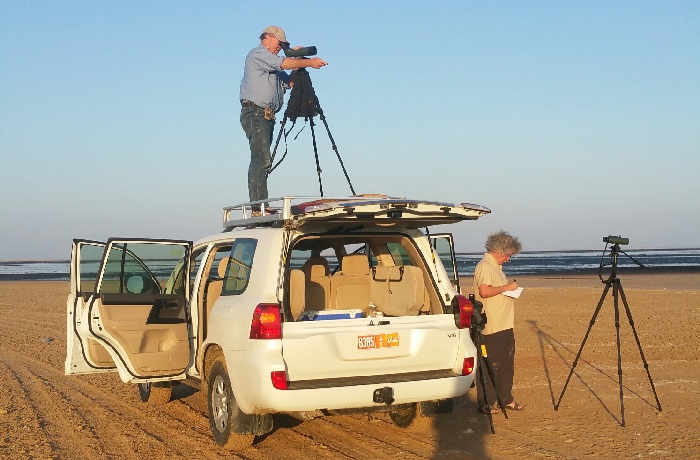
A day in the salt plains! #IWC50
-
International Waterbird Census
-
Species
This past Saturday we counted 70,000 roosting birds along the shoreline of Bar Al Hikman, and another 120,000 on the sebkha (the Arabic word for salt plains), and the mangroves nearby.

Birds flock to the mangroves and sebkha during the high tide, as they are protected behind the line of little dunes. The sebkha looks deceptively accessible, but the salt layers can be dangerously soft and it is only possible to drive on existing tracks. This means large parts of the salt plains have never been counted, or at best only from a distance. Identifying birds and counting their numbers from a distance is difficult, especially when temperatures are high and the mirages distort the view. We set our telescopes up on the car to have a better view.
The main concentrations are in an area behind the mangrove. Some parts can be easily counted. Thousands of waterbirds are so far away that they can only be identified as some sort of Sandplover, but they can’t be identified as either Lesser or Greater Sandplover from this distance.
After only the first weekend, we counted 190,000 waterbirds, an amazing number!
After the count on the salt plains, we made our way towards the mudflats and experienced the fantastic diversity of life in that part of this ecosystem. The footprints of the birds show how intensively the mudflat is used: every square inch is visited for foraging. Beautiful mussels, rays, cockles, sepia, and of course the birds, tens of thousands of waterbirds! What an amazing world!
The IWC team counting in Oman consists of volunteers, Kees Camphuijsen, Lenze Hofstee, Leon Kelder and Steven de Bie, as well as Wetlands International Associate Expert Szabolcs Nagy and Ward Hagemeijer, Wetlands International’s Head of Business and Ecosystems.
